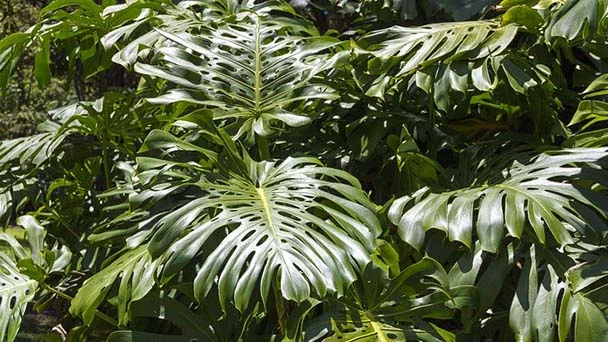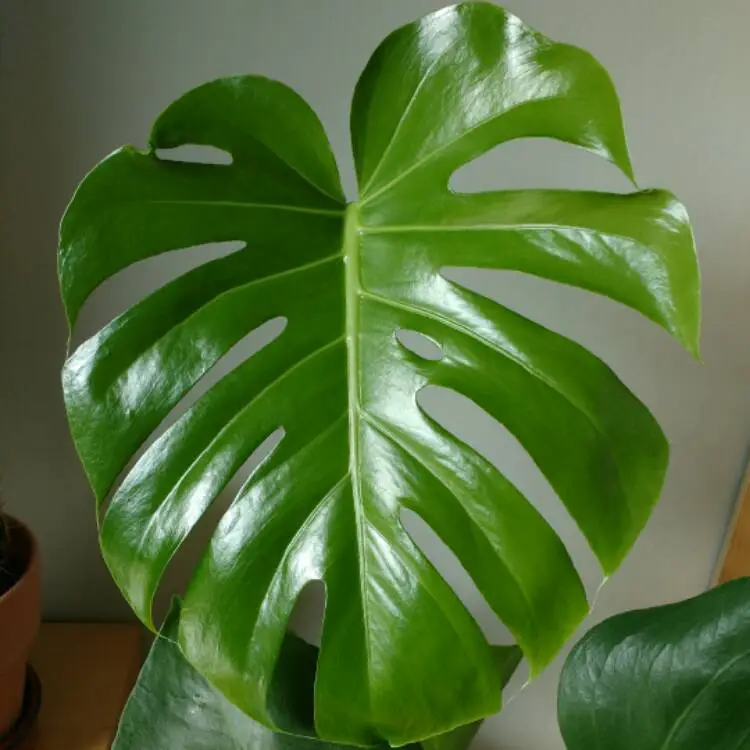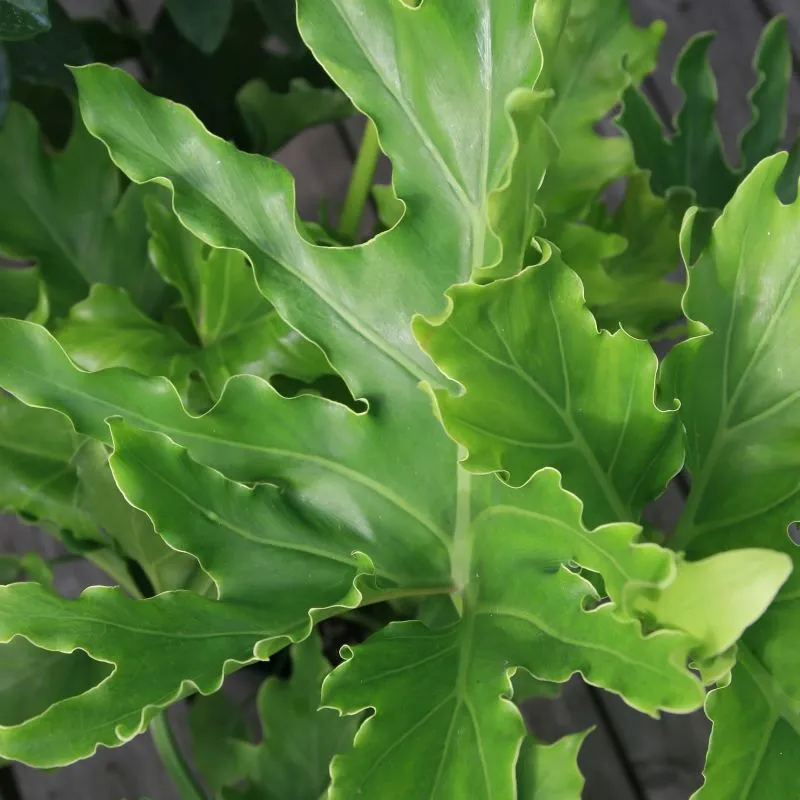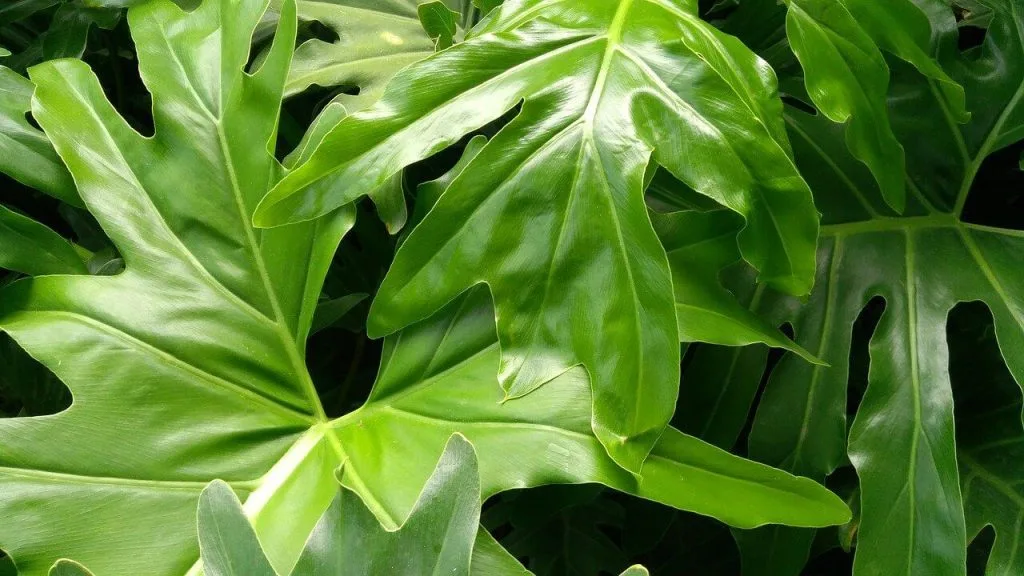How to Grow and Care for Split Leaf Philodendron (Monstera Deliciosa)
Written by Ivy
Jan 05 2023

Split leaf Philodendron can play a good role in decorating the space at home, which is why everyone likes to keep a pot of split leaf Philodendron at home. The ornamental value of turtle backed bamboo lies in its leaves. The gaps on the leaves of split leaf Philodendron look staggered, and the gaps have a different beauty.
In fact, the leaves of split leaf Philodendron do not have holes at the beginning. At the seedling stage, the leaves of split leaf Philodendron are actually a complete shape without many holes. The leaves will not start to have gaps until the roots can provide enough nutrition after a certain period of growth,

In fact, in the process of propagating split leaf Philodendron, we usually can use the rotten leaf soil, pastoral soil and coarse sand as the matrix, or peat soil, loess and nest coal ash as the matrix in the ratio of 2:1:1. These two mixtures are very suitable for split leaf Philodendron.
So at this moment, we can use this as evidence to wipe the leaves regularly or spray water on the leaves. It can directly supplement water to plants and indirectly increase the content of water in the air.
In the daily propagation of Split Leaf Philodendron, we can also use the residual milk in the bottle and the residual egg white in the eggshell of beaten eggs to water the plants. It is not a wrong natural fertilizer, but we must add water before watering the plants.

Split leaf Philodendron has a peculiar leaf shape with holes and cracks, and its stem is also strong and green. The flowering period of split leaf Philodendron is generally from August to September. It is a large indoor green ornamental plant.
Split leaf Philodendron's flower language is health and longevity. Because it has the effect of absorbing harmful substances, it is very beneficial to the human body. It can not only be used as ornamental plants, but also purify the air. Therefore, it represents health and longevity. It is a meaningful plant.
Read More:
In fact, the leaves of split leaf Philodendron do not have holes at the beginning. At the seedling stage, the leaves of split leaf Philodendron are actually a complete shape without many holes. The leaves will not start to have gaps until the roots can provide enough nutrition after a certain period of growth,
Split Leaf Philodendron Quick InfoSplit Leaf Philodendron Care in DetailSplit Leaf Philodendron WateringSplit Leaf Philodendron SoilSplit Leaf Philodendron LightSplit Leaf Philodendron TemperatureSplit Leaf Philodendron HumiditySplit Leaf Philodendron FertilizerSplit Leaf Philodendron PruningSplit Leaf Philodendron RepottingSplit Leaf Philodendron Pest & Disease ControlSplit Leaf Philodendron PropagationSplit Leaf Philodendron Propagation from CuttingSplit Leaf Philodendron Propagation from DivisionSplit Leaf Philodendron Propagation from SeedSplit Leaf Philodendron Benefits
Split Leaf Philodendron Quick Info
| Botanical/Scientific Name | Monstera Deliciosa |
| Common Name | Split Leaf Philodendron |
| When to Grow/Bloom/Harvest | Be planted at any time |
| Uses | Indoor houseplant |
| Origin | Central America from southern Mexico to Panama |
| Light Care | Bright indirect light |
| Soil Care | Fairly moist soil |
| Temperature Care | 65-80°F (18-27°C) |
| Humidity Care | At 40% or more |
| Watering | Water once every 7 to 10 days |
| Pruning Care | Trim spindly growth |
| Fertilizer Care | Fertilize at a rate of 1/2 teaspoon fertilizer per gallon of water |
| Propagation | Air layering or plant cuttings |
| Toxic | Raphides release a toxic histamine |

Split Leaf Philodendron Care in Detail
Split Leaf Philodendron Watering
Split Leaf Philodendron should have sufficient water. We must always keep the culture soil moist. During summer growth, we should water it once in the morning and at night, and the leaf surface should also be watered frequently to keep the leaves bright and the air moist. If the water evaporation is slow in winter, water once every 3-4 days and once a day.Split Leaf Philodendron Soil
Split Leaf Philodendron does not have high requirements for soil. Usually, we can plant it directly into pastoral soil, but it prefers loose soil with strong water retention as propagation substrate. It needs soil to provide water in time, otherwise the plant is easy to dehydrate, affecting the normal growth of split leaf Philodendron.In fact, in the process of propagating split leaf Philodendron, we usually can use the rotten leaf soil, pastoral soil and coarse sand as the matrix, or peat soil, loess and nest coal ash as the matrix in the ratio of 2:1:1. These two mixtures are very suitable for split leaf Philodendron.
Split Leaf Philodendron Light
Split leaf Philodendron likes a warm and humid environment, avoids drought and is afraid of direct sunlight, otherwise it is easy to cause dead leaves. In summer, we should put split leaf Philodendron indoors or under the shade, not on the balcony with strong sunlight, which is very easy to die. When the temperature drops to 6 ℃ in winter, split leaf Philodendron should be moved indoors to keep warm.Split Leaf Philodendron Temperature
As split leaf Philodendron is a tropical plant, its suitable growth temperature is between 20 ℃ and 25 ℃. During winter maintenance, the minimum growth temperature of split leaf Philodendron can not be lower than 10 degrees, but some robust plants can tolerate 5 degrees for a short time, but if it is lower than 5 degrees for a long time, the plants will be prone to frostbite. In addition, when the temperature is above 32 degrees in summer, it is necessary to spray cooling Split Leaf Philodendron.Split Leaf Philodendron Humidity
The main ornamental value of split leaf Philodendron is reflected in the wide leaves, so the leaf care and maintenance work is very important. Moreover, the leaves of split leaf Philodendron are very sensitive. Once the moisture content in the air is too small and too dry, it will curl and wilt.So at this moment, we can use this as evidence to wipe the leaves regularly or spray water on the leaves. It can directly supplement water to plants and indirectly increase the content of water in the air.
Split Leaf Philodendron Fertilizer
Split leaf Philodendron needs a lot of nutrients during its growth period, especially when it grows most vigorously. It needs to be fertilized once every two weeks, which can promote the growth of branches and leaves and the number of growth. This fertilization method continues until mid October. During the fertilization process of split leaf Philodendron, we should pay attention to the concentration of fertilization. We would rather turn it into light fertilizer than too thick, otherwise it is easy to burn its roots, resulting in withered, yellow and fallen branches and leaves. When applying fertilizer, pay attention not to let the fertilizer splash on the branches and leaves. First, it can avoid the injury of the leaves, and second, it can continue to maintain its ornamental value. (Read More about saving yellow leaves of Monstera.)In the daily propagation of Split Leaf Philodendron, we can also use the residual milk in the bottle and the residual egg white in the eggshell of beaten eggs to water the plants. It is not a wrong natural fertilizer, but we must add water before watering the plants.

Split Leaf Philodendron Pruning
The growth rate of split leaf Philodendron is not very fast compared with that of herbs, so it is not necessary to trim the branches and leaves regularly and quantitatively. Only the florist needs to trim the aged branches and leaves when he sees them. Of course, if you want to constantly plump the plant, you need to remove the top bud from time to time to make the whole potted plant look more round and plump.Split Leaf Philodendron Repotting
Split Leaf Philodendron potted plants need to be changed once a year, preferably between March and April. When changing the pot, we should remove the old soil, cut off the withered roots of split leaf Philodendron, and then add rotten organic fertilizer or phosphorus and potassium fertilizer as base fertilizer in the pot.Split Leaf Philodendron Pest & Disease Control
The main diseases of split leaf Philodendron are leaf spot, gray spot and stem blight. These diseases are usually caused by bacteria or fungi. After the disease, the plant will appear disease spots, which will wither and die in serious cases. Generally, we can spray zinc Daisen solution for control. The common pest of split leaf Philodendron is scale insects. This pest has a waxy shell, and contact insecticides are often difficult to take effect. Carbofuran can be buried in the soil for control.Split Leaf Philodendron Propagation
Split Leaf Philodendron Propagation from Cutting
Split leaf philodendro can adopt stem node cutting in spring and autumn, and the cutting effect is the best from April to may in spring and September to October in autumn. Because the temperature during this period is suitable, the stem node incision heals, takes root and survives quickly. For split leaf philodendron propagation from cutting, we can select the current year side branches with full stem tissue and strong growth. The length of the cuttings is 20-25cm, and the leaves at the base can be cut off. Retain the upper leaflets, cut off the long aerial roots, and retain the short aerial roots to absorb water and facilitate hair roots. The mixed matrix of coarse sand and peat or rotten leaf soil is used for the transplanting bed. 25-27 ℃ and high air humidity are maintained after transplanting, and rooting begins about 1 month after transplanting. After the cuttings take root, the axillary buds on the stem nodes also begin to sprout and expand leaves. In order to accelerate the growth of seedlings, we can keep the room temperature above 10 ℃, strengthen the management of fertilizer and water, and form seedlings the second year after cuttings. (Read More: Monstera Root Rot - Signs & How to Treat)
Split Leaf Philodendron Propagation from Division
Split leaf Philodendron propagation from division can be carried out in summer and autumn. We can split the side branches of large split leaf Philodendron in whole, take some air roots, and directly plant them in wooden barrel or bowl. It not only has high survival rate, but also has fast molding effect. Division is one of the most used and simplest methods in split leaf Philodendron propagation.Split Leaf Philodendron Propagation from Seed
Split leaf Philodendron propagation from seed is also a more common propagation method for the plant, but less than the first two. Split leaf Philodendron blooms in summer. In order to improve the seed setting rate, it is necessary to pollinate manually. The second pollination at 9-10 a.m. and 3-4 p.m. is the best, and the pollination success rate is high. It takes 15 months from pollination to seed maturity. In the stage of seed development, pay attention to ventilation and fertilizer and water management to promote fruiting and plumpness. Before sowing, soak the seeds in 40 ℃ warm water for 10 hours, and the sowing soil shall be disinfected at high temperature. split leaf philodendron seeds are large and can be sown on demand. After sowing, the room temperature shall be maintained at 20-25 ℃, the box mouth shall be covered with plastic film, and the humidity shall be maintained at more than 80%. Generally, they germinate 20-25 days after sowing. During the sowing of split leaf Philodendron seeds, if the room temperature is too low, it will not only affect the emergence of seedlings, but even the seeds will rot like water stains.Split Leaf Philodendron Benefits
Split leaf Philodendron has a peculiar leaf shape, and the leaves have pore like texture, like the back of a turtle. Split leaf Philodendron has the effect of purifying air and absorbing carbon dioxide. At night, split leaf Philodendron will absorb carbon dioxide, purify the air and improve the air. It can also absorb formaldehyde, benzene and other harmful gases. It is a good indoor plant.Split leaf Philodendron has a peculiar leaf shape with holes and cracks, and its stem is also strong and green. The flowering period of split leaf Philodendron is generally from August to September. It is a large indoor green ornamental plant.
Split leaf Philodendron's flower language is health and longevity. Because it has the effect of absorbing harmful substances, it is very beneficial to the human body. It can not only be used as ornamental plants, but also purify the air. Therefore, it represents health and longevity. It is a meaningful plant.
Read More:
- Monstera Lechleriana Care Guide 2021
- Monstera Borsigiana VS Monstera Deliciosa
- How to Grow and Care for Split Leaf
- How to Grow and Care for Monstera Obliqua Plant
- Philodendron Monstera Care & Propagation
- Rhaphidophora Tetrasperma (Mini Monstera) Care Guide
- Rhaphidophora Tetrasperma (Mini Monstera) Profile
- Why My Monstera Leaves Curling - 8 Reasons And How to Fix
- How to Save My Overwatered Monstera
- Why Does My Monstera Have Yellow Leaves
Latest Updated
- Benefits of Bugleweed - 7 Science-backed Health Benefits
- Bugleweed Dangers & Side Effects - Is It Poisonous?
- How to Plant Evergreen Trees - What You Should Know
- When to Plant Evergreens - Grow Guide for Evergreen Trees
- 12 Wonderful Evergreen Shrubs for Your Garden
- 12 Popular Evergreen Plants with Pictures for Beginners
- When And How To Prune A Lilac Bush Like a Pro
- How to Grow & Care for Lilac Vine (Hardenbergia Violacea)
- Japanese Lilac Tree (Syringa Reticulata) Care & Propagation Guide
- Shumard Oak Pros and Cons - What to Know
Popular Articles
- Winter maintenance of Antirrhinum Majus
- How to Grow Terminalia Mantaly Tree
- How to Grow and Care for Crossostephium Chinense
- How to grow Antirrhinum Majus in spring
- Peristeria Elata (Dove Orchid) Profile: Info & Care Guide
- Underwatered Snake Plant (Sansevieria Trifasciata) - Signs And How To Fix
- How to Care for Brazilian Jasmine Plant (Mandevilla Sanderi)
- How to Grow & Care for Graptopetalum Purple Delight in Summer
- Rosa Chinensis (China Rose): Plant Growing & Care Tips
- How to Care for Baby Sun Rose (Aptenia Cordifolia)